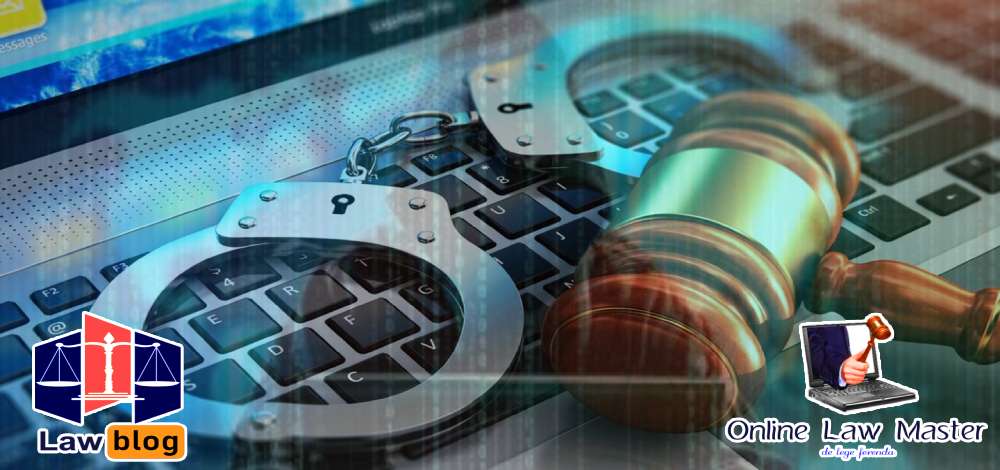
Cyber-crimes also known as the computer oriented crimes in the international arena. The term is much familiar among the present societies as the number of the cybercrimes are increasing globally. University of Maryland reports the Hackers attack every 39 seconds, on average 2,244 times a day. Further, it is reported that sixty-five per cent of all internet users are victims of cybercrime at some point in their lives, whether it is property theft like credit card fraud or the mass reproduction of protected documents. Thus, these statistical data clearly emphasize that the Cybercrime is predominant in the present world and it has been said to be a bigger earner than drug trafficking.
This article intends to enhance your knowledge on an important topic when considering the cyber-crimes which will explore more in to the types of cyber-crimes that have led to disputes in the digital environment. Hence, different scholars and institutions have identified several types of cyber-crimes that has been committed by the cyber criminals.
If we take a deep look in the terminology used in this context, both the terms of “cybercrime” & “cyber-crime” are being used by different countries. Nevertheless, in this essay we use the word cyber-crime as many international bodies and countries generally use that term to identify crimes committed through the use of computer systems are identified as cyber-crimes. As Information Technology usage continues to rise throughout the world, the threat of cyber-crime also growing. While some of these crimes are relatively harmless and very common, others are very serious. IT professionals have given several categorizations of cyber-crimes. There are many forms of cyber-crimes having different features.
The US State Department of Justice categorizes computer crime in three ways:
1. The computer as a target – attacking the computers of others (e.g.: spreading virus)
2. The computer as a weapon – using a computer to commit “traditional crime” that we see in the physical world (e.g.: fraud or illegal gambling)
3. The computer as an accessory – using a computer as a “fancy filing cabinet” to store illegal or stolen information.
Hafner (1995) has defined cybercrimes as offences that are committed against individuals or groups of individuals with a criminal motive to intentionally harm the reputation of the victim or cause physical or mental harm to the victim directly or indirectly, using modern telecommunication networks such as Internet (Chat rooms, emails, notice boards and groups) and mobile phones (SMS/MMS).
The Federal Bureau of Investigations has identified four instances of cybercrime:
1. Cybercrimes against children (e.g.: child pornography or child rape)
2. Theft of intellectual property
3. Publication and intentional dissemination of malware
4. National and international Internet fraud.
In addition, on its website, the FBI identifies cybercrime fugitives who have allegedly committed bank fraud and trafficked counterfeit devices that access personal electronic information. The FBI also provides information on how to report cybercrimes, as well as useful intelligence information about the latest cybercriminals.
One of the well-known methods of categorizing Cybercrimes had been popularized by Pavan Duggal, who is the President of cyber laws. According to Duggal, cyber-crime can be basically divided into three major categories.
a) Cyber crime against persons
b) Cyber crime against property
c) Cyber crime against Governments
Cyber-crimes committed against persons include various crimes like transmission of child-pornography, harassment of any one with the use of a computer such as e-mail. The trafficking, distribution, posting, and dissemination of obscene material including pornography and indecent exposure, constitutes one of the most important cyber-crimes known today. The potential harm of such a crime to humanity can hardly be amplified. This is one cyber-crime which threatens to undermine the growth of the younger generation as also leave irreparable scars and injury on the younger generation, if not controlled.
It spread rapidly throughout computer systems in the United States and Europe. It is estimated that the virus caused 80 million dollars in damages to computers worldwide.
The second category of cyber-crimes is that of cyber-crimes against all forms of property. These crimes include computer vandalism (destruction of others’ property), transmission of harmful programmes. Eg : A Mumbai-based upstart engineering company lost a say and much money in the business when the rival company, an industry major, stole the technical database from their computers with the help of a corporate cyber-spy.
The third category of cyber-crimes relate to cyber-crimes against Government. Cyber terrorism is one distinct kind of crime in this category. The growth of internet has shown that the medium of cyberspace is being used by individuals and groups to threaten the international governments as also to terrorize the citizens of a country. This crime manifests itself into terrorism when an individual “cracks” into a government or military maintained website. According to A.K. Gupta, Deputy Director (Co-ordination), CBI, terrorist outfits are increasingly using internet to communicate and move funds.
According to A. Prasanna of Institute of Management of Government in Kerala State, who has conducted pioneering work and research in to the cybercrime incidents in the region, there are 15 types of cybercrimes – hacking, cyber stalking, spamming, cyber pornography, phishing, software piracy, corporate espionage, cyber warfare, money laundering, embezzlement, password sniffers, spoofing, credit card fraud, web jacking, cyber terrorism.
Additionally, there are few other cybercrimes that should be included in this section: denial of service, virus dissemination, net extortion, cyber defamation, web defacement, cyber bullying, threatening, Information Warfare, or IW and salami attack also as the classes of cyber-crimes that has been committed all over the world.
Hence it can be stated undoubtedly that these different types of cybercrimes those which are happening all over the world are varied region wise, and according to the prevailing law of a particular state and different types of institutions, scholars have determined cyber-crimes under numerous types of groupings.
REFERENCE
- Moore, R. (2005) “Cyber crime: Investigating High-Technology Computer Crime,” Cleveland, Mississippi: Anderson Publishing.
- Michel Chukier, “Study: Hackers Attack Every 39 Seconds” <https://eng.umd.edu/news/story/study-hackers-attack-every-39-seconds>
- S Hoffman , ‘Norton Study: 65 Percent of Internet users are cybercrime victims ‘ [2012] 2(12) Computer Reseller News online magazine <http://www.securityskeptic.com/2016/02/identifying-cybercriminals-is-an-ip-address-sufficient.html>
- P Olson, We Are Anonymous: Inside the Hacker World of LulzSec, Anonymous, and the Global Cyber Insurgency (1st edn, Little Brown 2012)
- Justicegov, ‘COMPUTER CRIME AND INTELLECTUAL PROPERTY SECTION (CCIPS)’ (The United States Department of Justice, nd) <https://www.justice.gov/criminal-ccips>
- Computer Crime’ (Wikipaedia Computer Crime, nd) <https://en.wikipedia.org/wiki/Computer_crime>
- Cyber Crime’ (Cyber Crime, nd) <https://www.fbi.gov/investigate/cyber>
- RP Nandini, ‘Cybercrime’ [2010] 2(11) Think Quest <http://library.thinkquest.org/06aug/02257/more.html>
- Maya Babu, ‘What is Cybercrime?’ [2011] 3(8) Star of Mysore Online <http://www.crime-research.org/analytics/702>
- A Prasanna, ‘Cybercrimes law and practice’ [2011] -(-) – <www.img.kerala.gov.in/docs/downloads/cyber%20crimes.pdf?>
- MC Bassiouni, ‘The Sources and Content of International Criminal Law: A Theoretical Framework,’ [1999] 1(11) International Criminal Law 3-126

